Sciatica, a common but often misdiagnosed condition, is a leg pain that can interfere with daily activities and cause further distress. Physiotherapy offers a safe, natural, and efficient method for treating Sciatica pain. This blog will discuss the symptoms, origins, and how Physiotherapy Relieves Sciatica: 6 Best Stretches which can help alleviate the distressing condition.
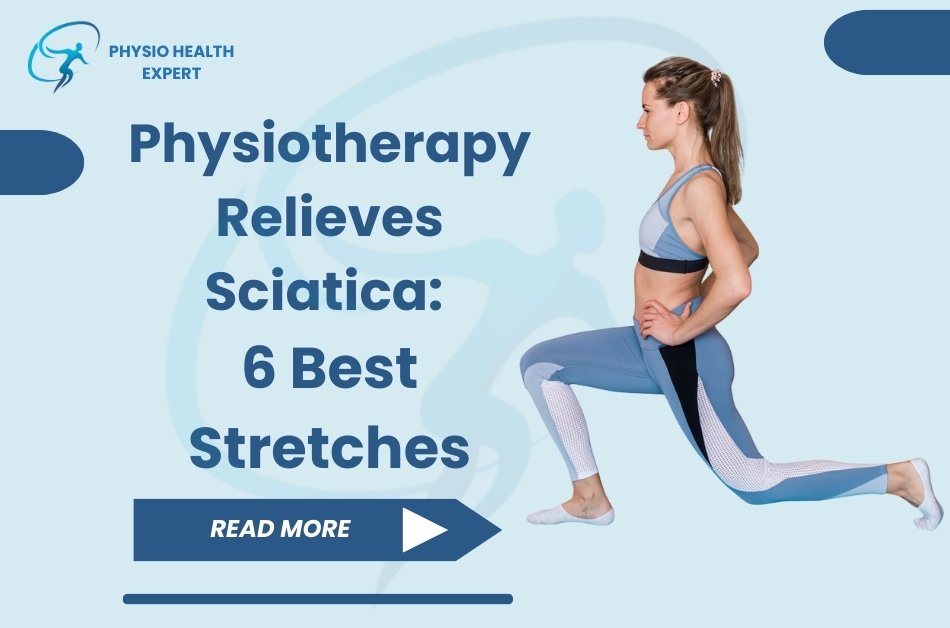
What is Sciatica?
The sciatic nerve, the largest nerve in the body, can be irritated, pinched, or compressed, causing Sciatica. This discomfort, which can range from a slight ache to a sharp burning sensation, can progress from the back to the leg and sometimes affect the foot.
Symptoms of Sciatica
Sciatica symptoms can range from moderate to severe, causing pain from the buttocks to the lower half of the calf and possibly radiating to the foot or toes. Numbness can be characterised by a loss of feeling or a “dead” sensation in the affected area, and may be either constant or intermittent. Paresthesia, coldness, and a sensation of rushing water are unusual symptoms. Weakness in muscles and hindrances in daily tasks may occur due to blocked nerve signals. Although rarely harmful, Sciatica can be frightening and erratic.
Why Is Sciatica So Painful? Typical Causes
Sciatica is a condition that causes pain, which can be severe or mild, and can worsen over time.
Spinal or non-spinal factors can cause it. Spinal causes include
- Disc herniation
- Bone spurs
- Spinal stenosis
A disc herniation compresses the sciatic nerve, while bone spurs form bony growths on the vertebrae due to osteoarthritis. Spinal stenosis narrows the spinal canal, reducing the space available for the spinal cord and nerve roots, which can cause pain along the sciatic nerve’s pathway. These conditions can cause nerve compression, inflammation, or irritation, disrupting normal nerve signalling and producing the radiating pain associated with Sciatica. It can be challenging to walk or stand up without assistance, and may affect sitting for extended periods.
Various non-spinal factors, including
- Piriformis Syndrome
- Pregnancy
- Lumbar radiculopathy
- Pelvic tumours
- Trauma
Piriformis Syndrome, a tight or spasming muscle in the buttocks, can cause Sciatica-like pain without involving the spine. Pregnancy can also cause increased strain on the sciatic nerve due to hormonal changes, weight gain, and shifting gravity. Lumbar radiculopathy, which is associated with the spinal nerve roots, can also result from irritation or inflammation of these nerve roots. Pelvic tumours can push against the sciatic nerve, causing chronic symptoms similar to conventional Sciatica. Identifying non-spinal causes can help in accurate diagnosis and effective treatment.
Physiotherapy Relieves Sciatica: 6 Best Stretches
It has been proven that Physiotherapy Relieves Sciatica by lowering inflammation and releasing tense muscles. To return to your favourite activities pain-free, the goal is to relieve the symptoms of Sciatica. Non-invasive methods are used in Physiotherapy treatments to ease tense muscles and encourage recovery. The goal of physical therapy for Sciatica is to strengthen the hip and lower back muscles. Exercise and physical therapy aid in the mobilisation and strengthening of the tissues in the thighs, pelvis, abdomen, buttocks, and lower back.
To address the symptoms and indicators of Sciatica, physical therapy and exercise aim to:
- Restore functional movement patterns without pain.
- Alleviate pain in the legs, thighs, buttocks, and lower back.
- Decrease spasms in the muscles
- Restore the lumbar spine’s and the sacroiliac joint’s functionality to increase lower body mobility
- Improve the lower back’s healing environment
- Encourage neuronal changes to lessen pain perception
- Reduce movement-related anxiety and avoid further pain flare-ups.
6 best stretches for Sciatica for quick relief:
As we have discussed before that Physiotherapy Relieves Sciatica, here we shall discuss about the stretches.
Figure 4 stretch:
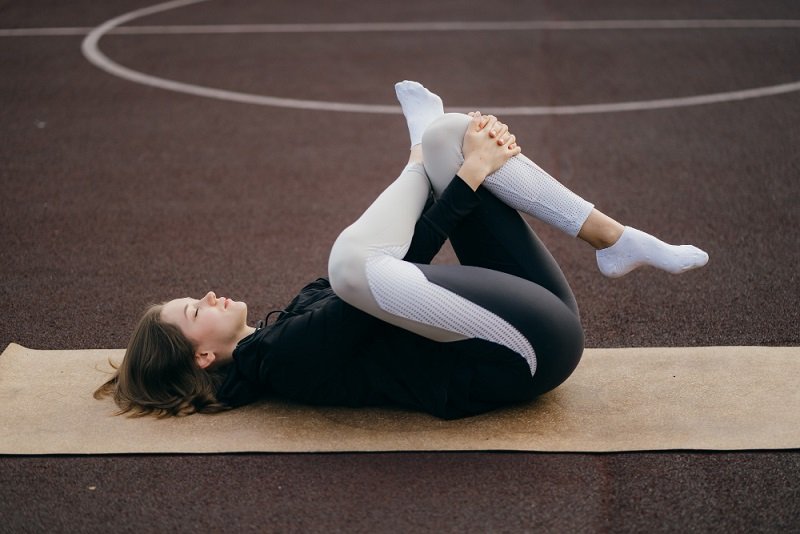
Stretching Techniques
• Lay on back with feet flat on ground.
• Keep right foot flexed and cross ankle over left knee.
• Left knee should come up to chest.
• Reach right hand through thighs and interlace fingers.
• Pull left knee toward chest, stopping when right hip and glutes stretch.
• Hold stretch for at least one minute.
• Release and repeat on left side.
Seated gluteal stretch:

Stretching for Injured Leg
• Sit securely near seat edge.
• Secure injured leg’s ankle with hand.
• Bend hip and tilt pelvis forward.
• Hold stretch for at least one minute.
Towel hamstring stretch:
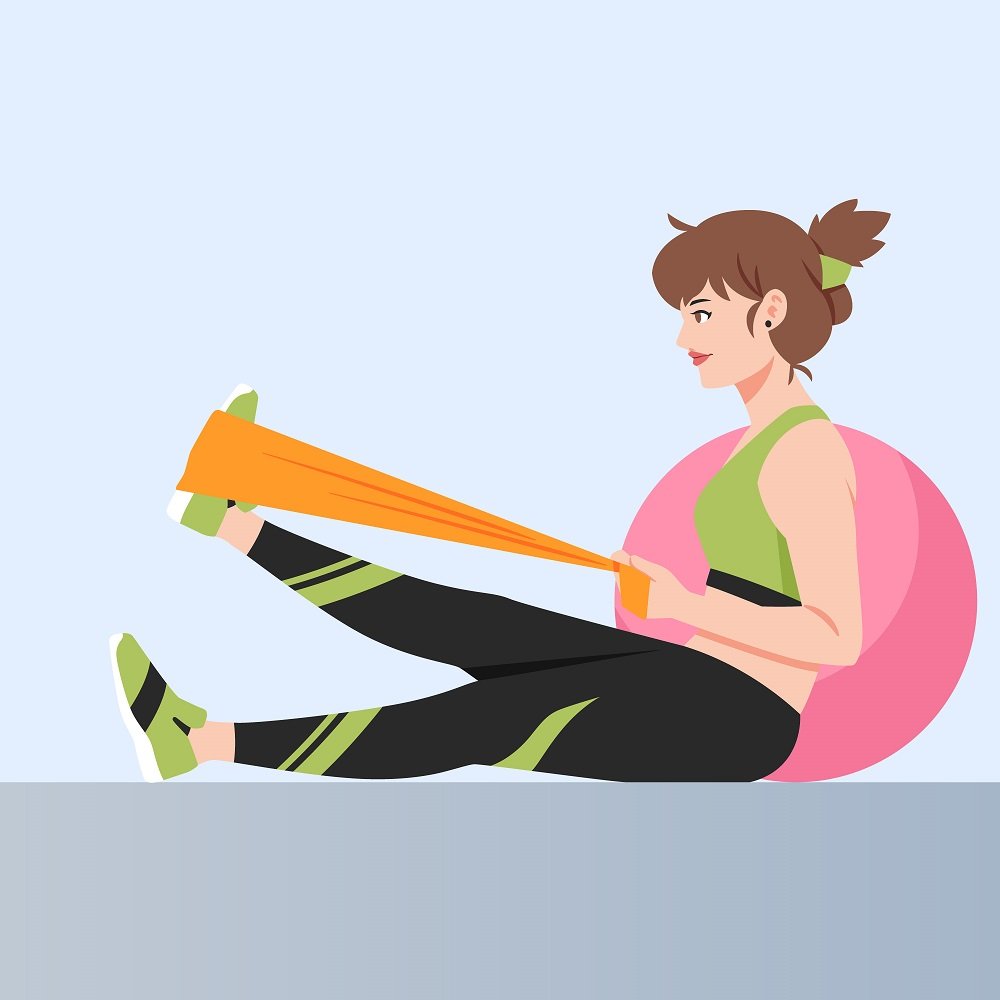
Stretching Techniques
• Lay on back, wrap towel around thigh, grip both ends for support.
• Raise foot towards ceiling, straighten knee until stretch at behind thigh.
• Stretch for 10 seconds, progress for over 30 seconds.
• Perform stretch for one leg at a time 3-4 times.
Sitting spinal stretch:

Exercise Guide:
• Sit on ground with feet flexed upwards.
• Bend right knee, place foot flat on floor.
• Place left elbow on right knee.
• Repeat three times for 30 seconds.
• Switch sides after 30 seconds.
Scissors Hamstring stretch:
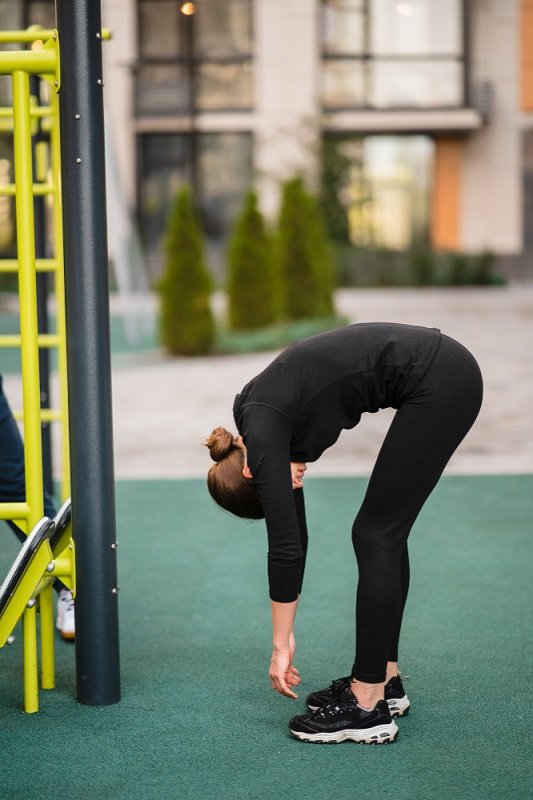
Stretching Technique
• Position right foot three feet ahead of left.
• Place shoulders and hips in front of you.
• Ensure right hip is not more forward than left.
• Hands should be on hips or chair side for balance.
• Fold torso forward over front leg and bend forward at waist.
• Maintain straight back and weight on front leg.
• Hold for five to ten seconds, then switch legs.
• Repeat 3 to 5 times on each leg.
Forward pigeon pose:
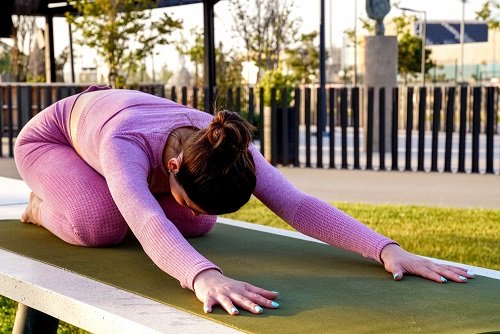
Exercise Guide:
• Stand on the ground with hands and knees.
• Lift right leg and position it in front of torso.
• Extend left leg behind you with dorsum on floor and toes pointed back.
• Gradually transfer body weight from arms to legs.
• Maintain straight posture with hands on either side of legs.
• Breathe deeply and exhale by bending upper torso forward over front leg.
• Use arms to support weight.
• Repeat on opposite side.
Final Words
Sciatica is painful condition that can make your daily life activities more burdensome, but the positive aspect is that there are numerous treatment options available, and may of the them are quite successful in symptoms reduction. This Blog Physiotherapy Relieves Sciatica is only for your assiatance at home and for informational purpose. To make a customize plan of care which will include lifestyle modification, nerve flossing and targeted exerciseto help you alleviate your symptoms, book your appointments now. We hope that Physiotherapy Relieves Sciatica will help you to combat your illness.
